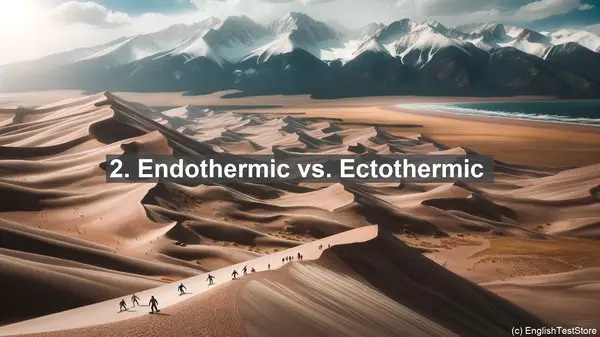Introduction
Welcome to today’s lesson on comparative physiology. In this lesson, we’ll be focusing on the top 10 commonly confused words in this field. Understanding these terms is crucial for a strong foundation in comparative physiology. So, let’s dive in!
1. Homologous vs. Analogous
One of the most fundamental distinctions in comparative physiology is between homologous and analogous structures. Homologous structures have a common evolutionary origin, while analogous structures serve similar functions but have different evolutionary origins. For example, the wings of a bat and the wings of a bird are analogous, as they serve the same purpose of flight, but their structures are different.
2. Endothermic vs. Ectothermic
Endothermic and ectothermic organisms differ in how they regulate their body temperature. Endothermic animals, like mammals, generate heat internally, while ectothermic animals, such as reptiles, rely on external sources for temperature regulation. This distinction has significant implications for an organism’s metabolism and energy requirements.
3. Osmosis vs. Diffusion
Osmosis and diffusion are both processes by which molecules move across a membrane. However, they differ in their driving force. Osmosis specifically refers to the movement of water molecules from an area of lower solute concentration to an area of higher solute concentration through a semipermeable membrane. Diffusion, on the other hand, involves the movement of molecules, including gases, from an area of higher concentration to an area of lower concentration.
4. Active vs. Passive Transport
When it comes to the movement of molecules across a cell membrane, there are two primary types of transport: active and passive. Active transport requires energy expenditure by the cell, usually in the form of ATP, to move molecules against their concentration gradient. Passive transport, on the other hand, does not require energy and occurs spontaneously, driven by the concentration gradient.
5. Innate vs. Adaptive Immunity
In the field of immunology, understanding the difference between innate and adaptive immunity is crucial. Innate immunity is the body’s first line of defense and is non-specific, meaning it provides a general response to pathogens. Adaptive immunity, on the other hand, is highly specific and develops over time. It involves the production of antibodies and memory cells, providing long-term protection against specific pathogens.
6. Hypertonic vs. Hypotonic
When comparing solutions, the terms hypertonic and hypotonic refer to the relative concentration of solutes. A hypertonic solution has a higher solute concentration compared to another solution, while a hypotonic solution has a lower solute concentration. This concentration gradient affects the movement of water molecules through osmosis, with water moving from the hypotonic to the hypertonic solution.

7. Systole vs. Diastole
In the context of the cardiac cycle, systole and diastole refer to specific phases. Systole is the contraction phase, during which the heart pumps blood. Diastole, on the other hand, is the relaxation phase, allowing the heart chambers to fill with blood. Understanding these phases is essential for comprehending the intricacies of cardiovascular physiology.

8. Allopatric vs. Sympatric Speciation
When it comes to the formation of new species, two primary modes are allopatric and sympatric speciation. Allopatric speciation occurs when a population is geographically separated, leading to reproductive isolation and the eventual formation of distinct species. Sympatric speciation, on the other hand, occurs within the same geographic area, often due to factors like polyploidy or habitat differentiation.
9. Prokaryotes vs. Eukaryotes
All living organisms can be classified into two broad categories: prokaryotes and eukaryotes. Prokaryotes, like bacteria, lack a true nucleus and membrane-bound organelles. Eukaryotes, on the other hand, have a well-defined nucleus and various organelles. This distinction has profound implications for the complexity and organization of cellular processes.
10. Autotrophs vs. Heterotrophs
When it comes to obtaining energy, organisms can be classified as autotrophs or heterotrophs. Autotrophs, like plants, can produce their own energy through processes like photosynthesis. Heterotrophs, on the other hand, rely on consuming other organisms for energy. This fundamental distinction underlies the flow of energy through ecosystems.
